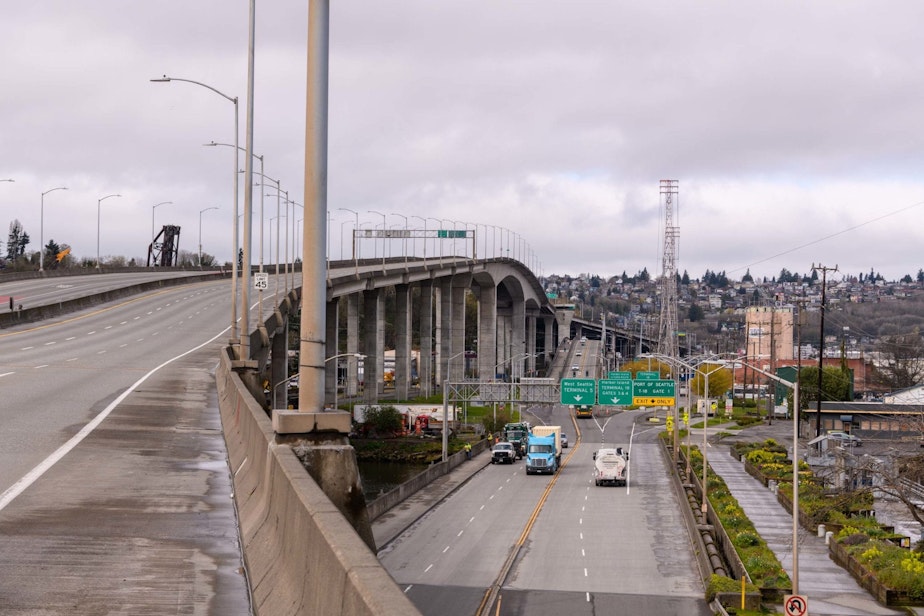SDOT points to rays of hope for reopening the West Seattle Bridge

For the 80,000 people who live in West Seattle, we got some optimistic news this week about the cracked and shut down West Seattle Bridge.
City officials are becoming more confident that repairs could extend the bridge’s life all the way into the next decade, or even longer.
This interview has been edited for clarity.
Mike Lindblom covers transportation for the Seattle Times. He told KUOW about what the city is considering doing.
Right now, the Seattle Department of Transportation's engineering managers, as well as their team of seven outside engineering experts, think that it is possible to rehabilitate the existing bridge for another 15 years of use, or even up to 40 years of use if they do additional strengthening underground around the foundations.
Early on, the director of SDOT, Sam Zimbabwe, expressed a little bit of doubt whether it could be repaired at all, and said it could last maybe 10 years at the most. What they found since then, through radar testing and some sampling inside the hollow bridge girders, is that there isn't any rust. If there were rust all through the steel inside the bridge, then it would be a lost cause to fix it, but the steel is in decent shape.
Sponsored
The city closed it suddenly on March 23 because some shear cracks, diagonal cracks that formed in 2013, suddenly start accelerating to the point where they were going to completely envelop and surround the girders. That creates a collapse risk if they don't do anything; if they let traffic continue and don't try to repair the cracks.
The city is saying 2022 [if they opt to do a full-on repair], not giving a particular month. Yesterday on a technical slide, their engineering consultant said that it was a 12-month operation, but also that it was complex compared with other options, such as a replacement span for part of the bridge, or building a partial or full replacement.
The work they're doing is considered complex, because if you do it wrong, the bridge can implode. It has to be done very slowly, carefully, with a lot of testing at each stage to make sure the bridge behaves the way it's supposed to in terms of vibration, flexing, thermal expansion, all the different ways that a bridge can move and breathe, so to speak.
Sponsored
If transportation officials decide to go ahead with repairs and the West Seattle bridge is usable for the next 15 years, possibly longer, is there a chance that it would still need to be completely replaced after that point?
There's a few ways to answer that question. First of all, just about everybody I've heard from West Seattle insists on having a bridge, and can't imagine having a zero bridge future in that area. Fifteen years is a long time, and the city thinks they could even get it out to 40 years with some ground strengthening to give further protection against earthquakes. So, you're talking about a very long time.
Sound Transit could have its light rail within 15 years, which would mean that at about the time these bridge repairs wear out you would have a light rail option, and people could go from one to another.
Also, you have to think about climate change. Is the city going to continue to accommodate 100,000 car trips a day that exist on the high bridge, or will it start cutting off or choking off personal driving? All those things factor in. Right now, I think most of the sentiment is that a bridge is necessary.
Listen to the interview by clicking the play button above.


